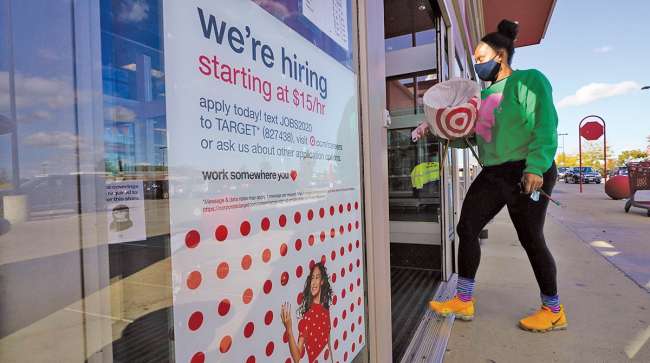Job Growth Softens, Misses Estimates

[Ensure you have all the info you need in these unprecedented times. Subscribe now.]
U.S. job growth unexpectedly softened in April from the prior month, suggesting that difficulty attracting workers is slowing momentum in the labor market.
Payrolls increased 266,000 after a downwardly revised 770,000 March increase, according to a Labor Department report May 7 that fell well short of projections. Economists in a Bloomberg survey projected a 1 million hiring surge in April. The unemployment rate edged up to 6.1%, though the labor-force participation rate also increased.
Treasury yields plunged, while inflation expectations spiraled downward and the dollar turned sharply lower. U.S. stock futures maintained gains. The eurodollar market pushed back its pricing for a Federal Reserve rate increase to mid-2023.
The disappointing payrolls print leaves overall employment more than 8 million short of its prepandemic level and is consistent with recent comments from company officials highlighting challenges in filling open positions.
In an interview with Bloomberg Television, Minneapolis Fed President Neel Kashkari said the data justified why the Fed is continuing to deliver stimulus. “Today’s jobs report is just an example of we have a long way to go and let’s not prematurely declare victory,” he said.
While job gains accelerated in leisure and hospitality, employment at temporary-help agencies and transportation and warehousing declined sharply.
Fed Chair Jerome Powell said in late April the dichotomy likely reflects a combination of a skills gap, child care obligations and lingering virus fears.
Some firms indicate enhanced unemployment benefits and the latest round of pandemic-relief checks are discouraging a return to work even as job openings approach a record.
On an unadjusted basis, payrolls rose by more than 1 million last month. Seasonal adjustments usually call for a large hiring gain in April, which may in part explain why the headline number fell short of forecasts.
Average hourly earnings rose 0.7% in April from a month earlier, to $30.17. The wage data for April suggest that the rising demand for labor associated with the recovery from the pandemic may have put upward pressure on wages, the Labor Department said in a statement.
A separate measure of compensation that isn’t subjected to shifts in industry employment — the employment cost index — rose 0.9% in the first quarter. That was the largest quarterly gain since 2007, according to the Labor Department’s data in late April.
Average weekly hours increased to match the highest in records dating back to 2006.
Labor force participation, a measure of the percentage of Americans either working or looking for work, rose to 61.7% in April from 61.5%, likely supported by increased vaccinations that helped fuel the reopenings of many retail establishments, restaurants and leisure-facing businesses.
Workforce participation for men age 25 to 54 increased last month, while edging lower for women.
— With assistance from Chris Middleton, Reade Pickert, Amanda Albright, Sophie Caronello and Liz Capo McCormick.
Want more news? Listen to today's daily briefing below or go here for more info:




